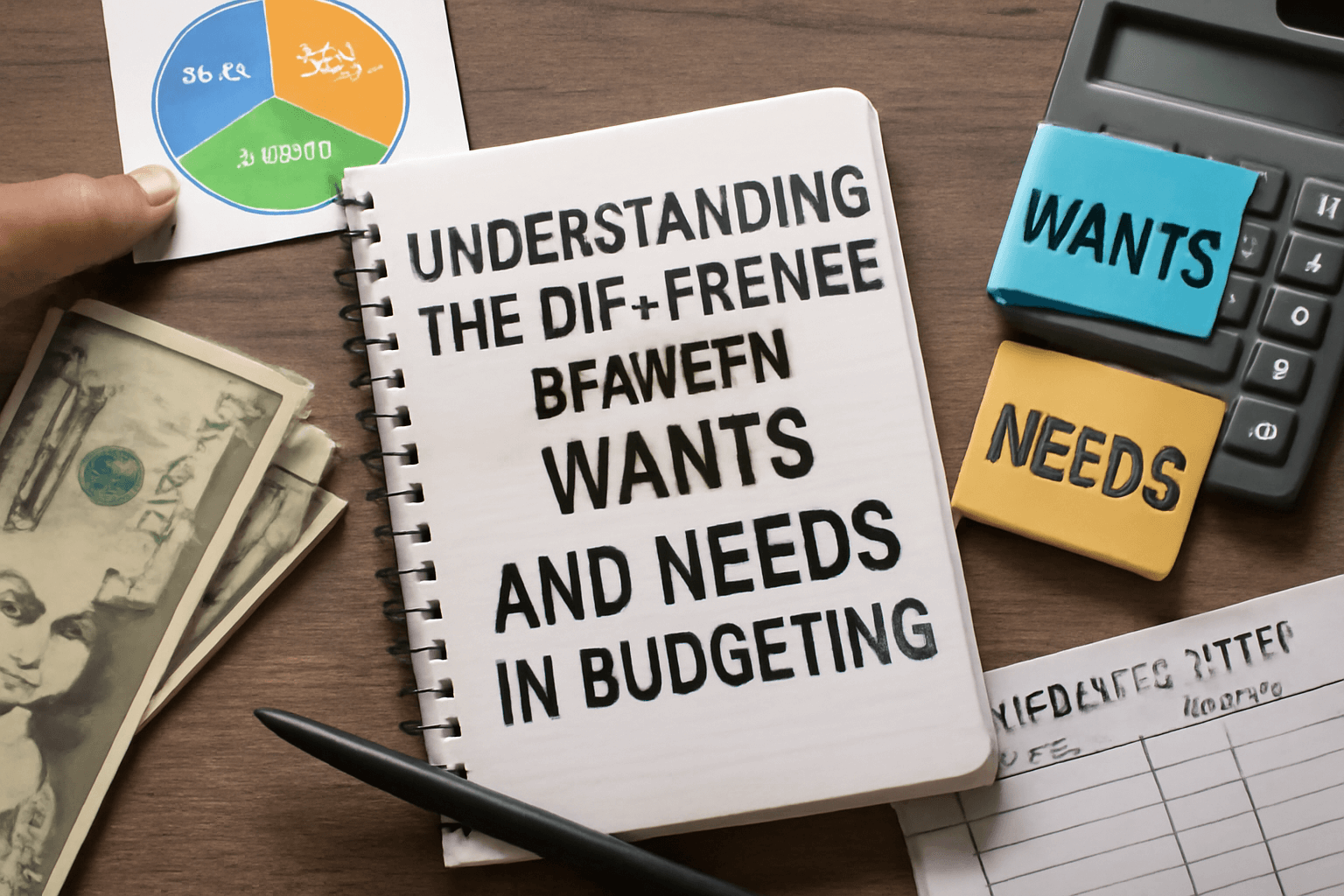One of the most essential skills in personal finance is knowing the difference between wants and needs. It sounds simple, but when you’re in a store or scrolling through an online shop, that distinction can become blurry fast.
Recognizing this difference allows you to prioritize your spending, avoid debt, and achieve your savings goals faster. In this guide, you’ll learn how to identify wants vs. needs and apply that awareness to your daily budgeting.
Why This Distinction Matters
Budgeting is about making choices and not all spending is created equal. Needs are necessary for survival and stability, while wants are optional and based on preference or convenience.
When your budget is tight, or you’re working toward financial goals, prioritizing needs ensures you’re financially safe while making smarter decisions about discretionary spending.
Defining Needs: What You Can’t Live Without
Needs are the things you must have to live and function. If you were to lose all your income tomorrow, these are the expenses you’d still try to cover first.
Examples of Needs
- Housing: Rent or mortgage payments
- Utilities: Electricity, water, heating, internet (in many cases)
- Food: Groceries (not dining out)
- Transportation: Gas, public transport, car maintenance
- Healthcare: Insurance, medications, doctor visits
- Minimum Loan Payments: Credit cards, student loans, etc.
Anything that supports your basic survival, safety, and income qualifies as a need.
Defining Wants: What Makes Life More Enjoyable
Wants are everything that enhances your lifestyle but isn’t required to survive. This doesn’t mean you should never spend money on wants it just means they should come after needs and savings are covered.
Examples of Wants
- Dining at restaurants
- Designer clothing or shoes
- Streaming subscriptions (Netflix, Spotify)
- Newest tech gadgets
- Gym memberships (unless essential for health)
- Vacations or getaways
- Fancy coffee drinks from cafes
Wants aren’t bad some are very enjoyable but recognizing them helps you make better choices, especially when funds are limited.
How to Tell the Difference
Sometimes it’s not obvious whether something is a want or a need. Here’s how to evaluate your purchases.
Ask Yourself:
- Would I suffer physically or financially without this?
- Is there a lower-cost alternative that still meets the need?
- Am I buying this to feel better emotionally?
- Is this purchase urgent or can it wait?
If the answer to most of these leans toward “no,” it’s likely a want.
The Role of Wants and Needs in Budgeting
Once you identify your needs and wants, you can allocate your money more efficiently.
Use the 50/30/20 Rule
A popular budgeting method breaks down your after-tax income into:
- 50% Needs
- 30% Wants
- 20% Savings and Debt Repayment
This framework ensures that you cover your essentials, enjoy your life, and still move forward financially.
Practical Tips to Control Spending on Wants
If you tend to overspend on wants, here are some strategies:
1. Make a “Wants List”
Instead of impulse buying, write down items you want to buy. Revisit the list in 30 days. Often, the urge will pass.
2. Budget for Wants Intentionally
Give yourself a set monthly amount for non-essentials. Once it’s spent, don’t dip into other categories.
3. Find Cheaper Alternatives
Can you cook a similar meal at home? Stream free movies instead of subscribing to five services? Use community events for entertainment?
4. Wait Before Buying
Use the 24-hour or 7-day rule before buying something non-essential. It gives your brain time to cool off and evaluate whether it’s worth it.
5. Celebrate Mindful Choices
Recognize when you avoid spending on a want and redirect that money to your savings. Small wins compound into big progress.
When Wants Become Needs
Some wants evolve into needs over time, depending on circumstances.
Examples:
- A car might become essential if you move to an area with no public transit.
- Internet might be a need if you work from home.
- A gym membership may be critical if you have health conditions and need exercise supervision.
The key is context. Be honest with yourself about what’s necessary versus what’s just more comfortable.
Final Thoughts: Budget With Purpose, Not Just Numbers
Budgeting is more than math it’s about values. When you clearly understand your needs and wants, you take control of your money instead of letting your emotions or habits dictate your financial future.
By consciously choosing what matters most, you’ll avoid wasteful spending, reduce financial stress, and make room for your true goals whether it’s building an emergency fund, paying off debt, or enjoying guilt-free luxuries now and then.
Be honest. Be intentional. And remember: saying “no” to a want today can mean saying “yes” to something even better tomorrow.
